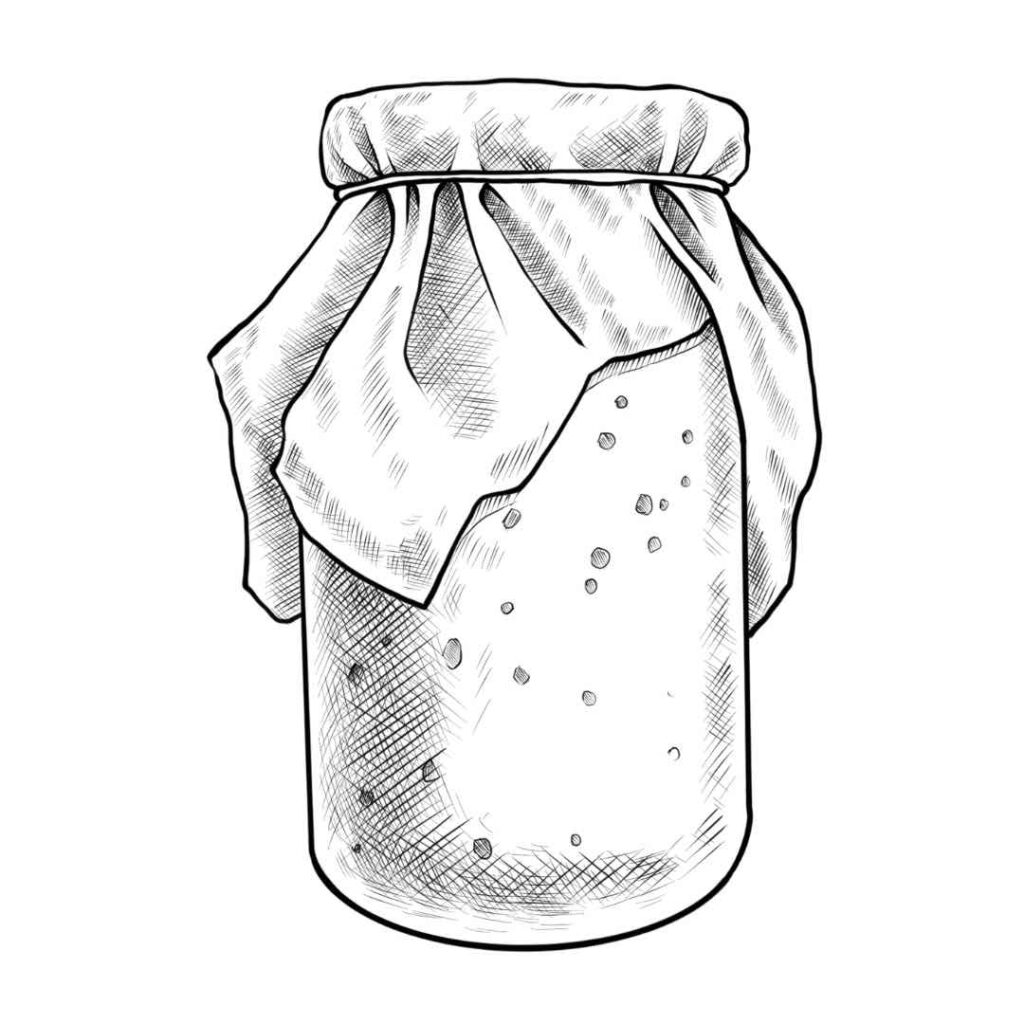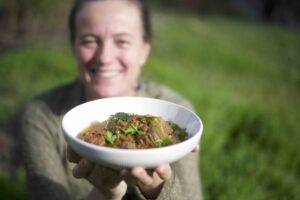
Shelf-Stable Deconstructed Stuffed Peppers (Pressure-Canned)
Perfect for large harvests, meal prep, and pantry storage
Let the future be tasty and let it be full of life!
Gut health is human health
Kombucha is a delicious, tangy, and naturally fizzy fermented tea that’s packed with probiotics and health benefits. But to keep your kombucha happy and healthy, you’ll need to give it a bit of TLC. Whether you’re a first-timer or someone who’s had a SCOBY hotel on the shelf for months, this guide walks you through all the necessary steps to brew, care for, and store your kombucha with confidence.
What is kombucha?
Kombucha is made by fermenting sweetened tea with a SCOBY (Symbiotic Culture Of Bacteria and Yeast). The SCOBY eats the sugar and transforms the tea into a tangy, slightly fizzy drink.
Before you even start, make sure all your tools—jar, cloth, spoon, etc.—are thoroughly clean and free of soap residue. Avoid using metal for anything that will touch the SCOBY, as it can react with the acidic brew and harm your culture.
Use black tea, green tea, or a blend (avoid herbal teas with oils, like mint or chamomile). Combine the following:
1 liter (1 quart) of filtered water
1 tablespoon (15 ml) loose-leaf tea or 2 tea bags
50–100 grams (¼–½ cup) of white sugar
Let it steep, remove the tea, and cool it completely before adding to your fermentation jar.
Once your tea is room temperature, pour it into a wide-mouth glass jar. Add:
1 SCOBY
100–200 ml (½–1 cup) of previously brewed kombucha (as a starter tea)
Cover the jar with a breathable cloth (like a coffee filter or cheesecloth) secured with a rubber band.
Place your jar in a dark, warm place (21–29°C / 70–85°F) away from direct sunlight. Let it ferment for 7 to 14 days, depending on your taste preference—shorter for sweeter, longer for more tangy.
Taste it using a clean straw after day 7. When it tastes right to you, it’s ready!
Carefully remove the SCOBY and 1 cup of the kombucha to save for your next batch. Then, you can bottle the rest:
Pour into clean, sealable glass bottles
Add optional flavors (like ginger, berries, or herbs)
Seal and let it sit at room temperature for 2–5 more days to build fizz (this is called second fermentation)
Refrigerate to stop fermentation when it’s fizzy enough for you.
Don’t toss your SCOBY! Place it in a clean jar with a bit of kombucha (your “starter tea”) and cover it with a breathable cloth. This is your SCOBY hotel. Feed it fresh tea every few weeks if you’re not brewing regularly.
Mold looks dry and fuzzy (black, green, or white)—discard everything and start over
SCOBY is floating/sinking/tilting—totally normal
Your kombucha smells like vinegar? That’s a good sign—just taste it to see if it’s too sour
Avoid using flavored or oil-containing teas—they can harm the SCOBY
Taking care of your kombucha is a bit like tending to a houseplant—it doesn’t need much, just consistency, cleanliness, and the right environment. With a little attention, you’ll have a continuous supply of refreshing, probiotic-rich kombucha to enjoy and share!
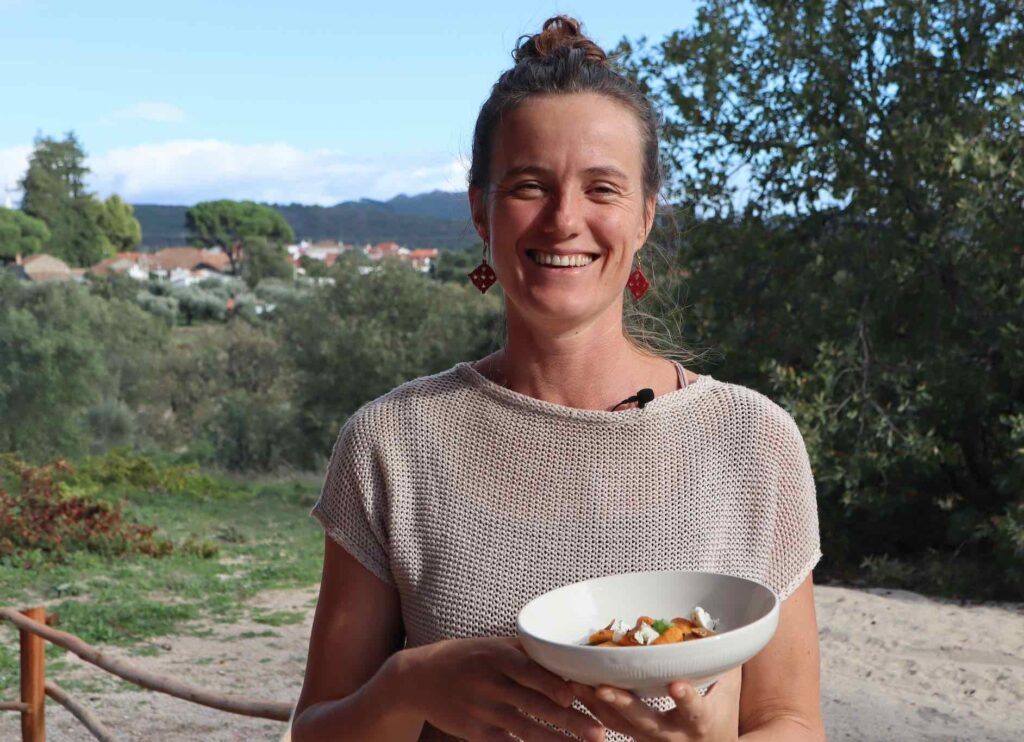

Perfect for large harvests, meal prep, and pantry storage
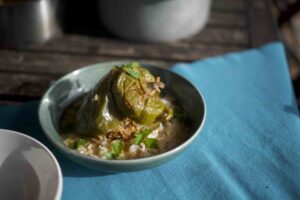
These stuffed peppers with rice and beef are tender, flavour-packed, and simmered in a rich tomato-beef broth. A perfect from-scratch recipe for using up lots of green bell peppers. Serves 25!
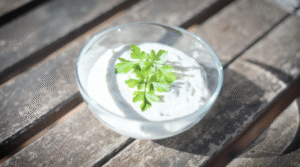
This roasted almond and parsley dip is one of those quietly magical recipes that instantly elevates a meal. It’s bright, savory, slightly tart, and deeply aromatic thanks to roasted almonds, fresh parsley, and a generous amount of good olive oil. Unlike a traditional pesto, this dip keeps the almonds crunchy rather than fully blended into a paste, giving each spoonful a wonderful texture that feels rustic and homemade.
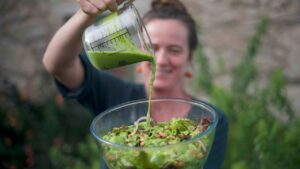
f you want potatoes that are shatteringly crispy on the outside and soft, fluffy, and steamy on the inside, this is how you do it. These crispy baked potatoes are simple, rustic, and absolutely irresistible — especially when you cook them in delicious animal fat. Schmaltz, lard, tallow, or goose fat all give these potatoes the kind of flavour you just don’t get from oil.
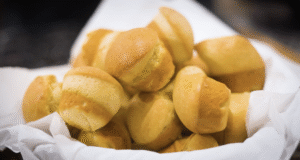
f you want potatoes that are shatteringly crispy on the outside and soft, fluffy, and steamy on the inside, this is how you do it. These crispy baked potatoes are simple, rustic, and absolutely irresistible — especially when you cook them in delicious animal fat. Schmaltz, lard, tallow, or goose fat all give these potatoes the kind of flavour you just don’t get from oil.

f you want potatoes that are shatteringly crispy on the outside and soft, fluffy, and steamy on the inside, this is how you do it. These crispy baked potatoes are simple, rustic, and absolutely irresistible — especially when you cook them in delicious animal fat. Schmaltz, lard, tallow, or goose fat all give these potatoes the kind of flavour you just don’t get from oil.
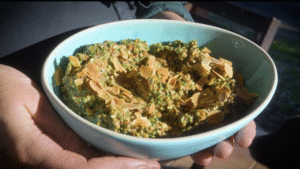
This roasted almond and parsley dip is one of those quietly magical recipes that instantly elevates a meal. It’s bright, savory, slightly tart, and deeply aromatic thanks to roasted almonds, fresh parsley, and a generous amount of good olive oil. Unlike a traditional pesto, this dip keeps the almonds crunchy rather than fully blended into a paste, giving each spoonful a wonderful texture that feels rustic and homemade.
"Let these Recipes inspire you, but never limit your creativity!"
Sophie de Jong

Recipe Categories
We lost so much.
Our pastures are destroyed, many of our old olive trees, the young orchards, the irrigation systems, our most important tools, water pumps, and power setup—either melted or destroyed.
Our food and hay stores, the fences, and many of the stable buildings are either damaged or lost entirely.
What took years to build was reduced to ash in a single afternoon.
Ready to Recharge and Enjoy Real Food in Nature?
Cook, connect, and grow in the heart of our regenerative farm.
Real food. Deep rest. Lifelong memories.
